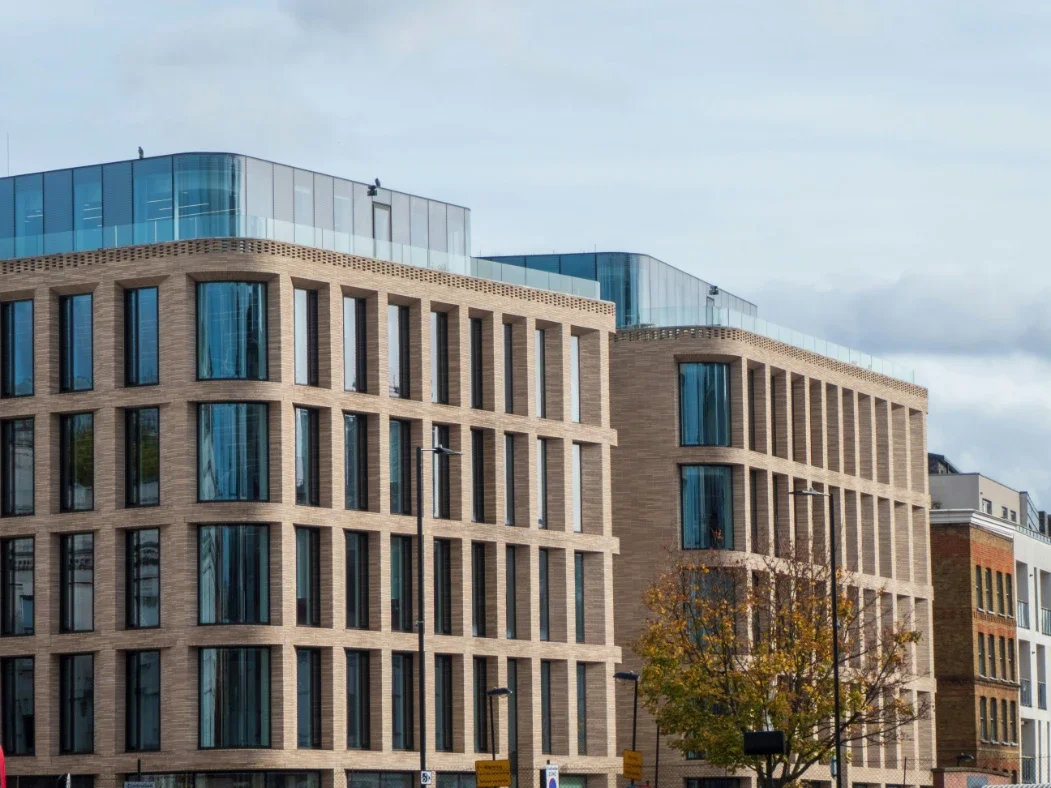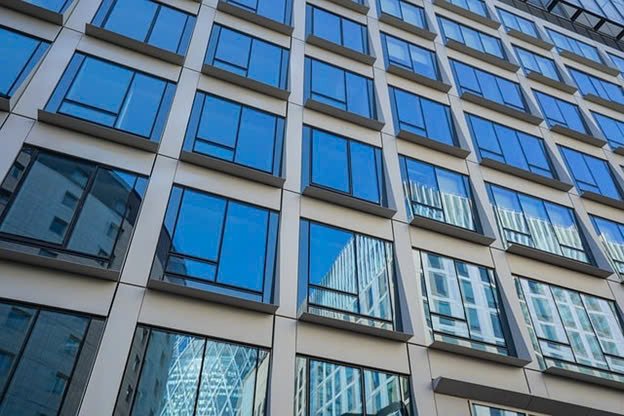The Building Safety Features That Add Real Value to Commercial Property
Discover how modern building safety features enhance commercial property value, attract tenants, and ensure long-term investment security.
Commercial property values used to be about location, square footage, and lease terms. Those things still matter, but the conversation has shifted dramatically. Buildings that looked like solid investments five years ago are now sitting on the market because they're missing safety features that buyers consider non-negotiable.
This isn't about ticking boxes for compliance. It's about what actually moves the needle when buyers are comparing properties and deciding what they're willing to pay. Some safety features genuinely add value. Others are just minimum requirements that won't help a sale but will definitely kill one if they're missing.
Fire Safety Systems That Buyers Actually Check
Walk through any commercial property viewing now and chances are the buyer has brought someone technical along. They're not just looking at the space anymore, they're checking every system that could become a problem or an expense down the line.
Fire safety infrastructure has become one of the first things that gets scrutinized. Not the obvious stuff either. Everyone expects fire alarms and extinguishers. What buyers are examining now is the ventilation strategy, particularly in buildings with complex layouts or multiple floors.
Natural smoke vent systems in stairwells and atriums have gone from being something architects specified to something buyers actively look for in the documentation. The reason is simple: these systems need to work automatically in an emergency, and they need to be maintainable without specialist intervention. Buildings that have proper smoke control designed into the structure rather than retrofitted later show better in valuations because there's less chance of expensive remedial work being needed.
The bigger issue is documentation. A building might have all the right systems installed, but if the paperwork isn't complete or the testing records have gaps, buyers treat it the same as if the systems don't exist. They price in the cost of bringing everything up to verifiable standards, which usually means the seller takes a hit on the sale price.
Access and Egress That Actually Makes Sense
This is where a lot of older buildings fall down. They might meet the letter of the regulations from when they were built, but modern buyers are asking whether the escape routes would actually work in a real emergency with real people who don't know the building layout.
Buildings with clear, well-lit escape routes that don't require going through security doors or navigating confusing corridors are worth more. It sounds basic, but the number of commercial properties with escape routes that technically comply but practically don't is surprising. Buyers know this creates liability risk and tenant dissatisfaction.
Emergency lighting is another detail that gets checked thoroughly now. Not just whether it exists, but whether it's been maintained, when the batteries were last replaced, and whether the coverage is actually adequate. Buildings where this has been kept on top of consistently have an advantage over those where it's been treated as an afterthought.
The Ventilation Question Everyone's Asking
Air quality became a major talking point during the pandemic and it hasn't gone away. Tenants want to know that buildings have proper ventilation, not just for comfort but for health. This matters more in some sectors than others (offices care more than warehouses, for example), but it's affecting values across the board.
Buildings with mechanical ventilation systems that can demonstrate good air changes per hour and proper maintenance records are more attractive to buyers. The problem is that upgrading ventilation in existing buildings is expensive and disruptive. Properties that were designed with good ventilation from the start have a genuine advantage.
The question buyers ask is whether the ventilation system can be adapted if requirements change. Systems that are at their capacity limit with no room to improve create a ceiling on what the building can be used for, which affects long-term value.
Structural Integrity That Can Be Proven
Post-Grenfell, everyone became much more aware of building materials and structural safety. Buyers want to see that materials used in construction are documented, that any cladding meets current standards, and that there's a clear record of any structural work that's been done over the building's lifetime.
This is particularly relevant for buildings that have been extended or significantly altered. Each time major work happens, it should be properly certified and documented. Buildings with complete records of structural work and materials are simply easier to sell because buyers don't have to wonder what they're getting.
The issue becomes acute in buildings where records are incomplete or missing entirely. Recreating this documentation is possible but expensive, and buyers factor that cost into their offers. Some won't even make offers on buildings where structural history can't be adequately demonstrated.
Accessibility That Goes Beyond Minimum Standards
Legally required accessibility features are baseline now. What adds value is accessibility that makes buildings genuinely easy to use for everyone, not just barely compliant. This includes things such as lift capacity that actually handles peak usage without creating bottlenecks, properly designed accessible toilets that don't feel like afterthoughts, and parking that works for people with different mobility needs.
Buildings that treat accessibility as a design feature rather than a compliance issue tend to have better tenant retention, which directly affects investment value. Tenants appreciate not having to retrofit accessibility features themselves, and it reduces the risk of discrimination claims that could affect the building's reputation.
Energy Efficiency That Actually Reduces Running Costs
Energy Performance Certificates matter more than they used to, but buyers are also looking at whether efficiency improvements are genuine or just paper exercises. Buildings with modern, efficient HVAC systems, proper insulation, and LED lighting throughout demonstrate lower running costs, which makes them more attractive to tenants and easier to lease.
The challenge is that some buildings can't easily be improved beyond a certain point. Listed elements, structural limitations, or simply the age of the building can create barriers to efficiency upgrades. Properties where efficiency was built in or can be improved without major work maintain better values than those with fundamental limitations.
Security Systems That Tenants Trust
Modern commercial tenants expect building security that works without being intrusive. This means access control that's reliable, CCTV that actually covers relevant areas and is maintained properly, and security measures that don't make the building feel unwelcoming.
Buildings with outdated security systems or, worse, systems that have been added piecemeal over time without proper integration, create concerns for buyers. They know tenants will ask about security, and inadequate systems can be deal-breakers for certain types of occupiers.
The value isn't necessarily in having the most advanced security technology. It's in having systems that are appropriate for the building's use, properly maintained, and documented clearly. Buyers want to know they won't need to rip out and replace security infrastructure within a year of purchase.
Maintenance History That Tells the Right Story
This might be the least exciting aspect of building safety, but it's one of the most important for value. Buildings with comprehensive maintenance records showing regular inspections, timely repairs, and proactive replacements command better prices than buildings where maintenance has been reactive or poorly documented.
Buyers look at maintenance records to understand what's coming. A roof that's been inspected regularly and had minor repairs done on schedule is different from one that's been patched repeatedly and is clearly approaching end of life. The first scenario gives buyers confidence. The second creates negotiation leverage that works against the seller.
Fire safety systems, ventilation equipment, lifts, and building services all need documented maintenance histories. The buildings that sell well are the ones where this documentation is complete and shows a pattern of professional management rather than minimal intervention.
What Actually Moves Property Values
The safety features that add real value are the ones that reduce risk and future costs for buyers. They're verifiable, properly maintained, and designed to work in actual emergencies rather than just on paper. Buildings that have these features as integral parts of their design rather than retrofitted additions tend to perform better in sales because there's less uncertainty about what might need fixing.
For sellers, the time to address documentation gaps and maintenance backlogs is before listing, not during negotiations. Every question a buyer raises about safety systems weakens the seller's position and reduces the pool of potential buyers willing to make offers. The market has become considerably less forgiving of buildings that aren't genuinely ready for the level of scrutiny that modern property transactions involve.






